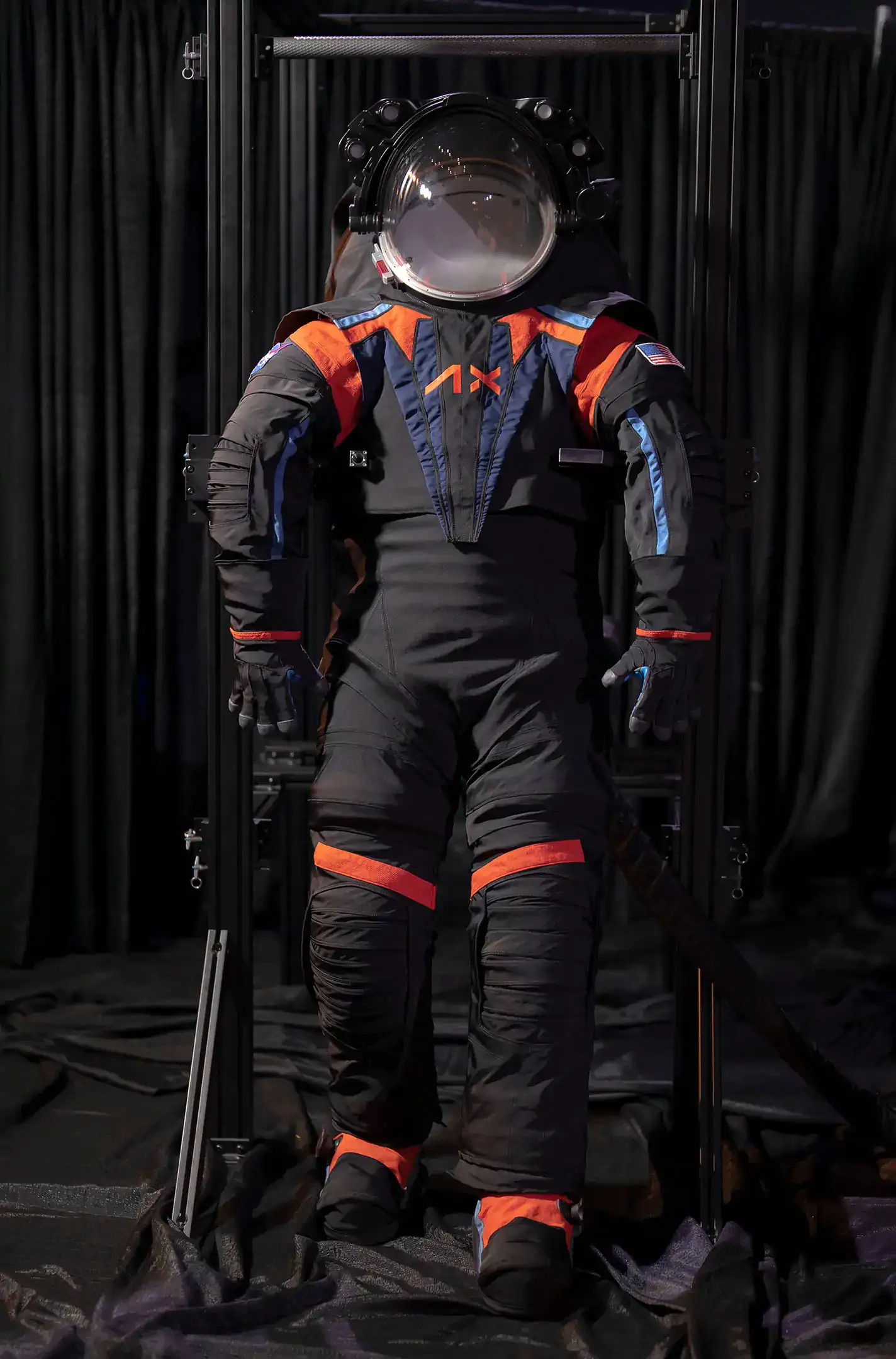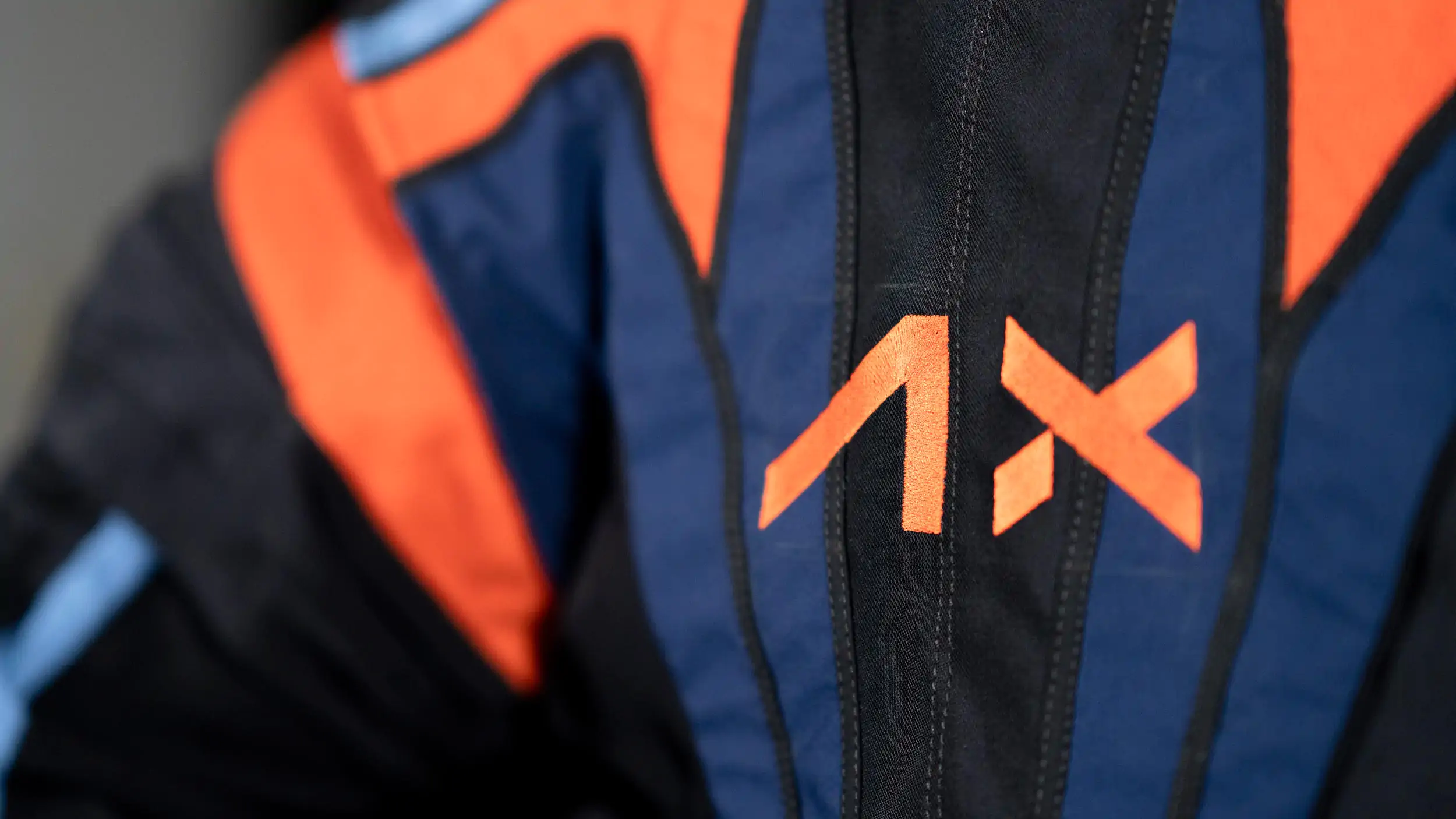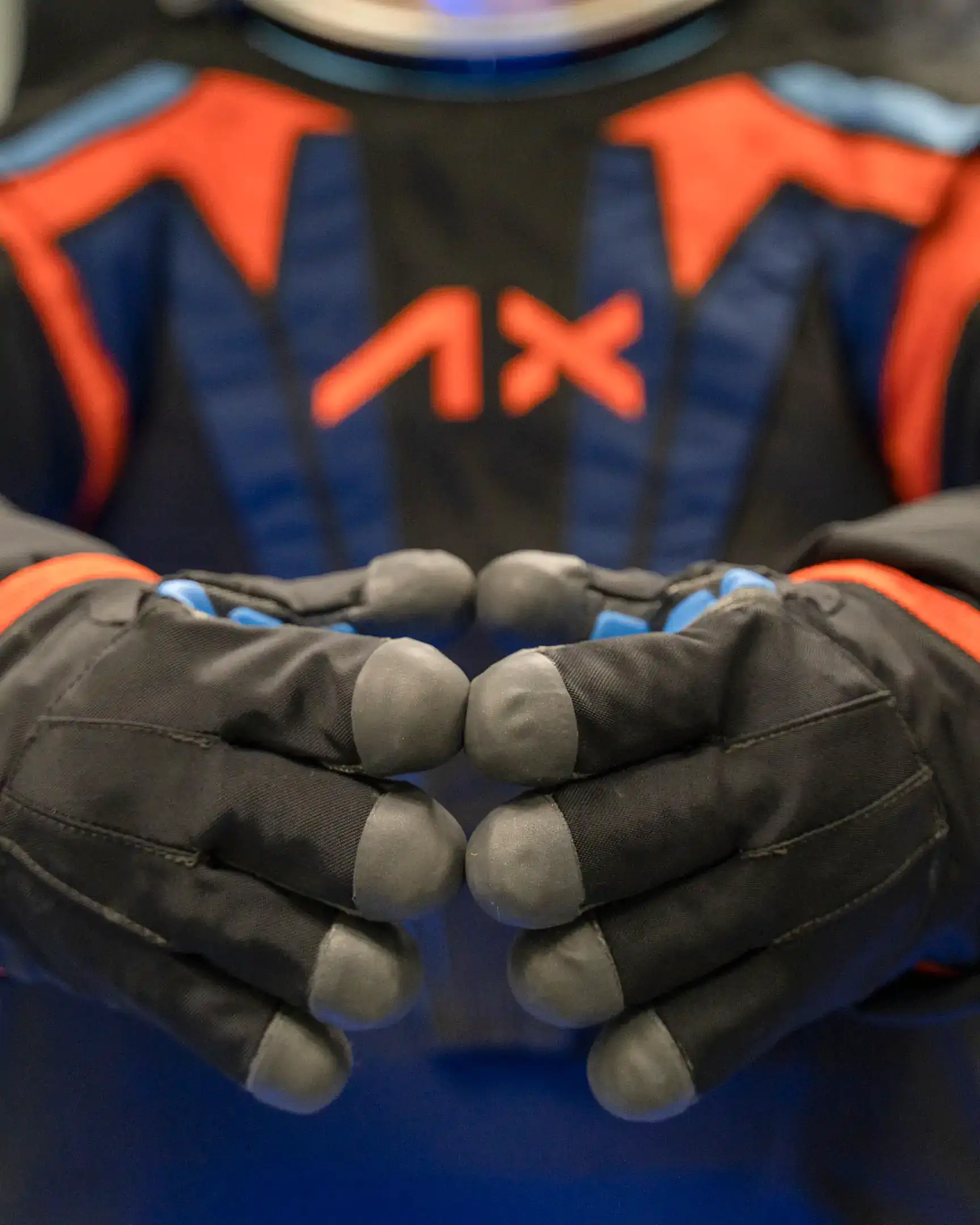When NASA sends the first astronauts to explore near the lunar South Pole, moonwalkers will wear spacesuits provided by Axiom Space. NASA selected the company to develop the modern suits for the Artemis III mission and participated in activities when the first prototype was revealed Wednesday during an event at Space Center Houston in Texas.
Helping take a step forward in the agency’s goal to build a robust economy at the Moon by working with commercial service providers, Axiom Space hosted the event for students and media to ask questions and get a close-up look at the spacesuit.

The Artemis III spacesuit prototype, the AxEMU. Though this prototype uses a dark gray cover material, the final version will likely be all-white when worn by NASA astronauts on the Moon’s surface, to help keep the astronauts safe and cool while working in the harsh environment of space. Credit: Axiom Space
“NASA’s partnership with Axiom is critical to landing astronauts on the Moon and continuing American leadership in space. Building on NASA’s years of research and expertise, Axiom’s next-generation spacesuits will not only enable the first woman to walk on the Moon, but they will also open opportunities for more people to explore and conduct science on the Moon than ever before,” said NASA Administrator Bill Nelson. “Our partnership is investing in America, supporting America’s workers, and demonstrating another example of America’s technical ingenuity that will position NASA and the commercial space sector to compete – and win – in the 21st century.”
When astronauts return to the Moon for the first time in over 50 years as part of NASA’s Artemis III mission, they will be wearing Axiom Space’s next-generation spacesuit to walk on the lunar surface. Credit: Axiom Space
Artemis III will land astronauts, including the first woman, on the Moon to advance long-term lunar exploration and scientific discovery, and inspire the Artemis Generation. NASA selected Axiom Space to deliver the moonwalking system, including the spacesuit, for the mission. Called the Axiom Extravehicular Mobility Unit, or AxEMU, the spacesuit builds on NASA’s spacesuit prototype developments and incorporates the latest technology, enhanced mobility, and added protection from hazards at the Moon.
NASA chose to use a commercial services contract for development of the new spacesuit, whereby NASA purchases moonwalking services from Axiom Space. Under this model, the company is encouraged to pursue other commercial customers for their moonwalking services. This mutually beneficial approach helps bolster an emerging commercial market and grants NASA the right to use the data and technologies developed under the contract for future exploration efforts.

Credit: Axiom Space
“NASA is leading the way in enabling a growing space economy by leveraging industry capabilities and NASA’s expertise to provide moonwalking services as safely, effectively, and efficiently as possible,” said Lara Kearney, manager of NASA’s Extravehicular Activity and Human Surface Mobility program.
NASA established the foundation for the AxEMU with the agency’s Exploration Extravehicular Mobility Unit (xEMU) prototype development efforts that advanced spacesuit designs for multiple destinations. Axiom Space used the experience, expertise, and data behind the xEMU as a basis for the design and development of the AxEMU, including advancements in technology, training, astronaut feedback on comfort and maneuverability, and compatibility with other NASA systems. Leaning on NASA’s prior development efforts is helping Axiom Space reduce technical and schedule risk.

Credit: Axiom Space
NASA experts defined the technical and safety standards by which the spacesuits will be built, and Axiom Space agreed to meet these key agency requirements. The AxEMU features the range of motion and flexibility needed to explore more of the lunar landscape, and the suit will fit a broad range of crew members, accommodating at least 90 percent of the US male and female population. Axiom Space will continue to apply modern technological innovations in life support systems, pressure garments, and avionics as development continues.
Axiom Space is responsible for the design, development, qualification, certification, and production of flight training spacesuits and support equipment, including tools, to enable the Artemis III mission. The company will test the suit in a spacelike environment prior to the mission. NASA maintains the authority for astronaut training, mission planning, and approval of the service systems.

Credit: Axiom Space
Following Artemis III, the agency will compete future Artemis mission services under the Exploration Extravehicular Activity Services (xEVAS) contract. NASA is using the contract to meet the agency’s spacewalking needs for both the Moon and the International Space Station. The agency recently awarded a task order to Collins Aerospace, who is also competing within the xEVAS contract, to develop new spacesuits for astronauts to wear during spacewalks on the space station. Both vendors will compete for future spacewalking and moonwalking services task orders.
Through Artemis, NASA will land the first woman and the first person of color on the Moon, paving the way for a long-term, sustainable lunar presence to explore more of the lunar surface than ever before and prepare for future astronaut missions to Mars.
We recommend
- Trust Evaluation Scheme for Technology Quality of Service Based on Blockchain ZHANG Xuhao et al., Computer Engineering, 2021
- Research on Persistent Storage Method Against Board-Level Physical Attacks LI Min et al., Computer Engineering, 2021
- SDN-Based High-Performance and QoS Guaranteed Inter-Satellite Routing Algorithm for Low-Earth Orbit Satellites WANG Kuiyu et al., Computer Engineering, 2021
- Task Offloading and Service Caching Algorithm Based on DDPG in Edge Computing CHEN Qinglin et al., Computer Engineering, 2021
- A Metric Meta-Learning Algorithm Based on Group Equivariant Convolution WU Pengxiang et al., Computer Engineering, 2021
- Container Migration Method Based on Bandwidth Prediction and Adaptive Compression LUO Cheng et al., Computer Engineering, 2021
- Survey of Research on Lightweight Neural Network Structures for Deep Learning WANG Jun et al., Computer Engineering, 2021
- Modeling and Analysis of Security Information Flow in Mobile Edge Computing XIE Na et al., Computer Engineering, 2021
- Ciphertext Retrieval Scheme Based on Key Aggregation for Electronic Medical Record on Blockchain NIU Shufen et al., Computer Engineering, 2021
- Software Subscription Model Based on Non-Fungible Tokens in Blockchain ZHANG Zhanpeng et al., Computer Engineering, 2021
- Targeting settings
- Do not sell my personal information
- Google Analytics settings



